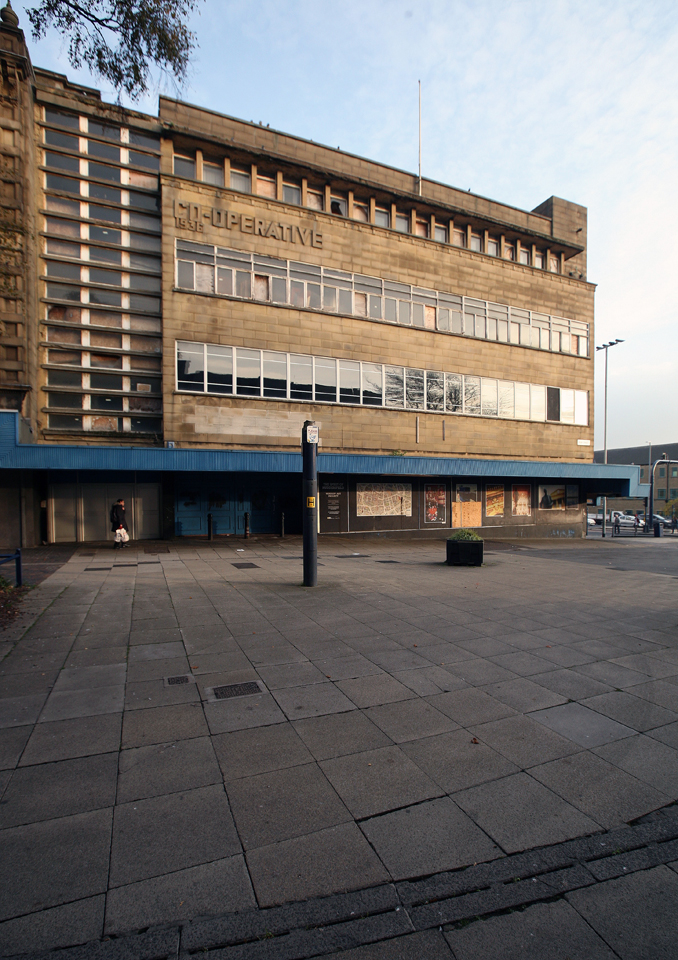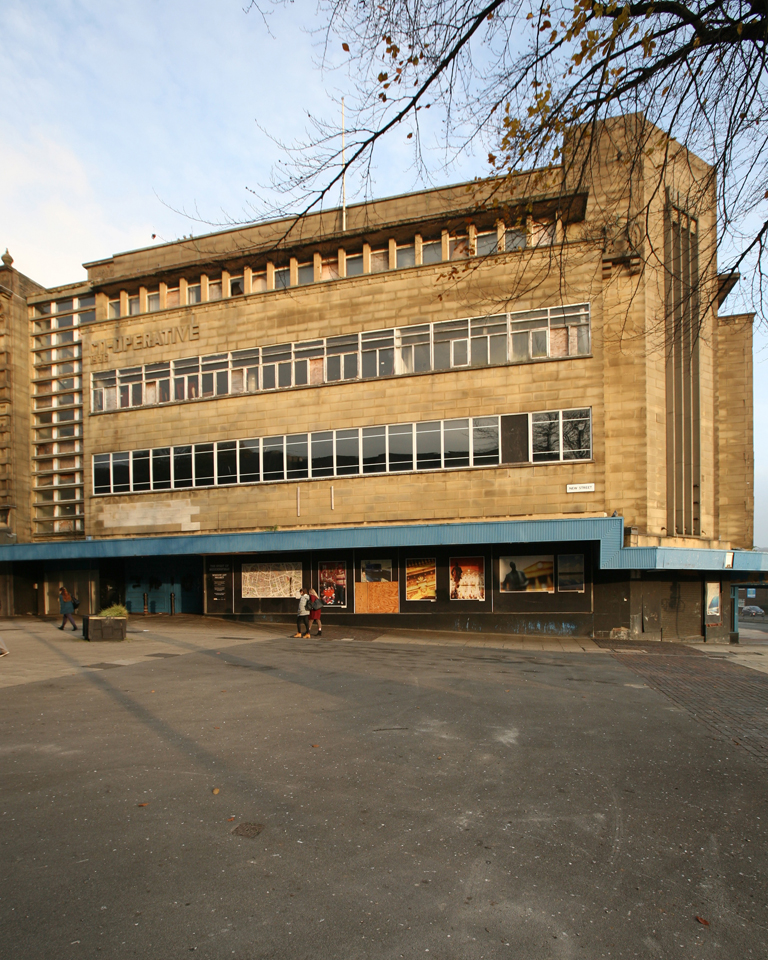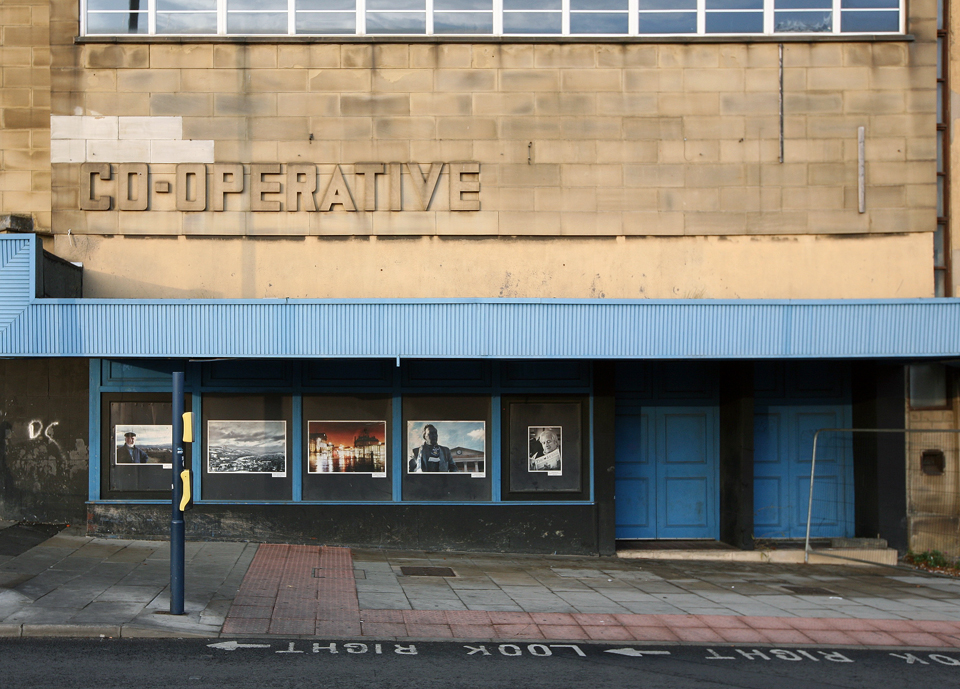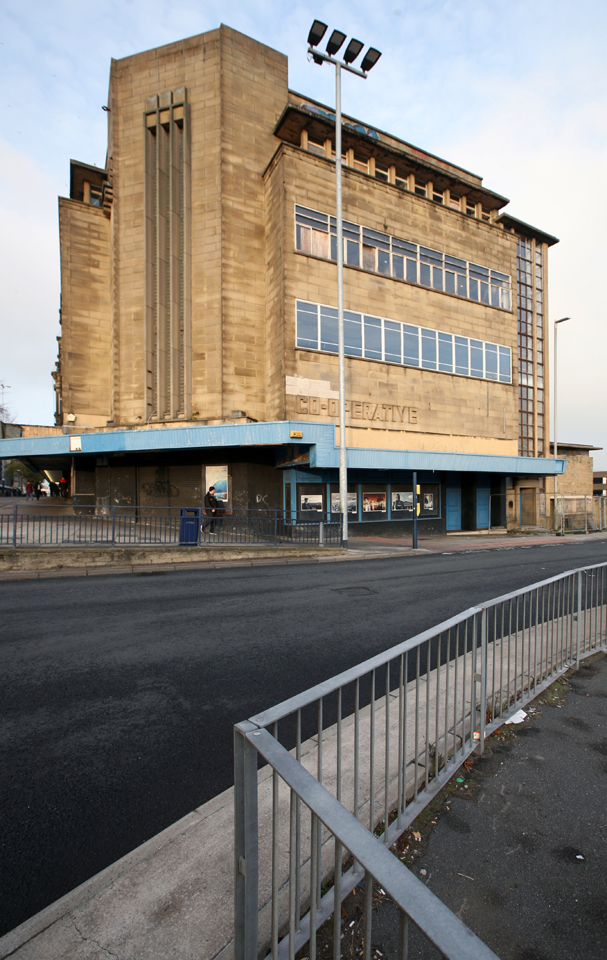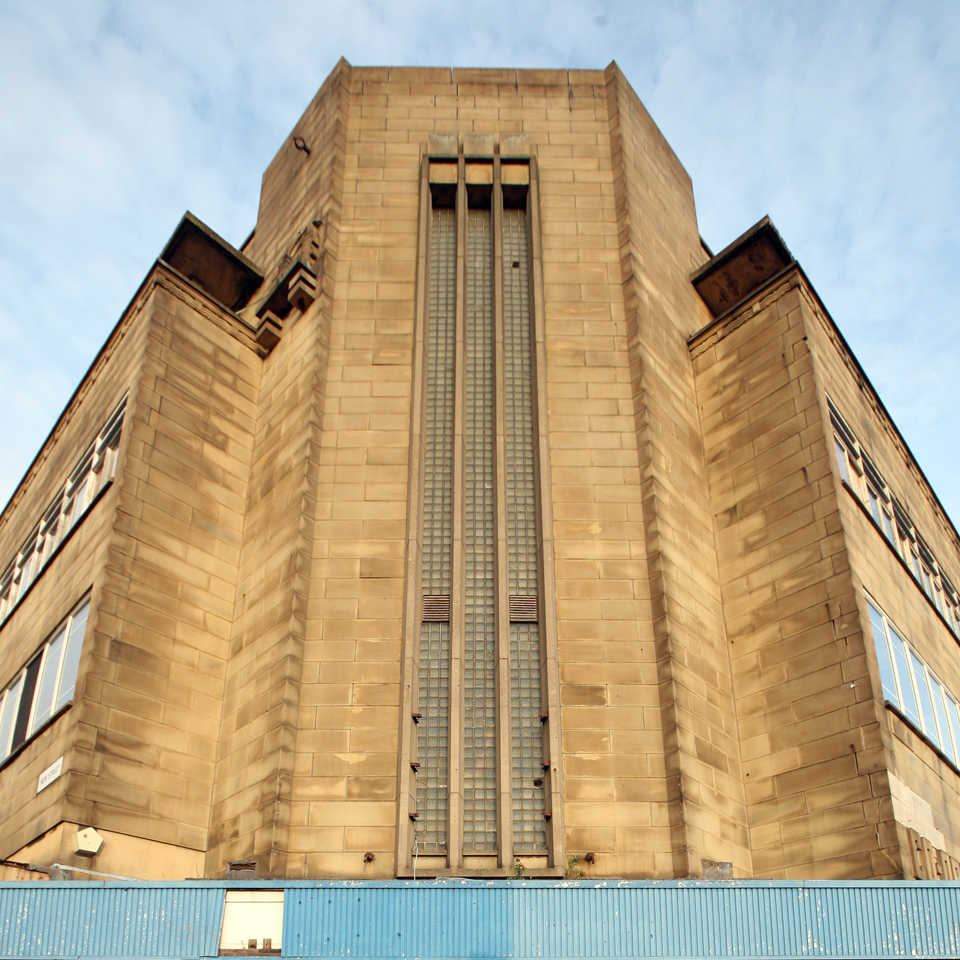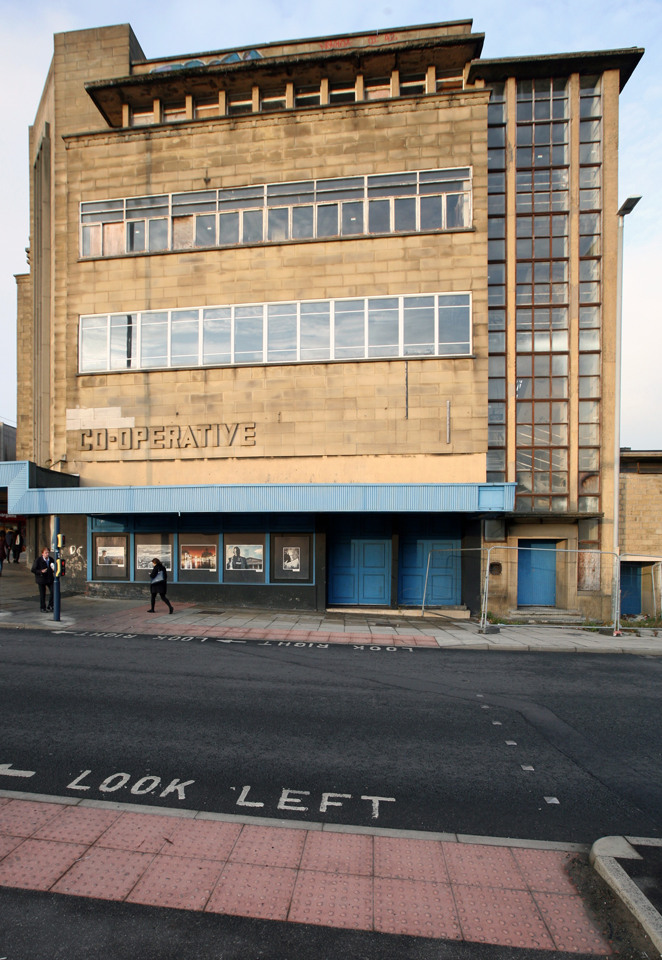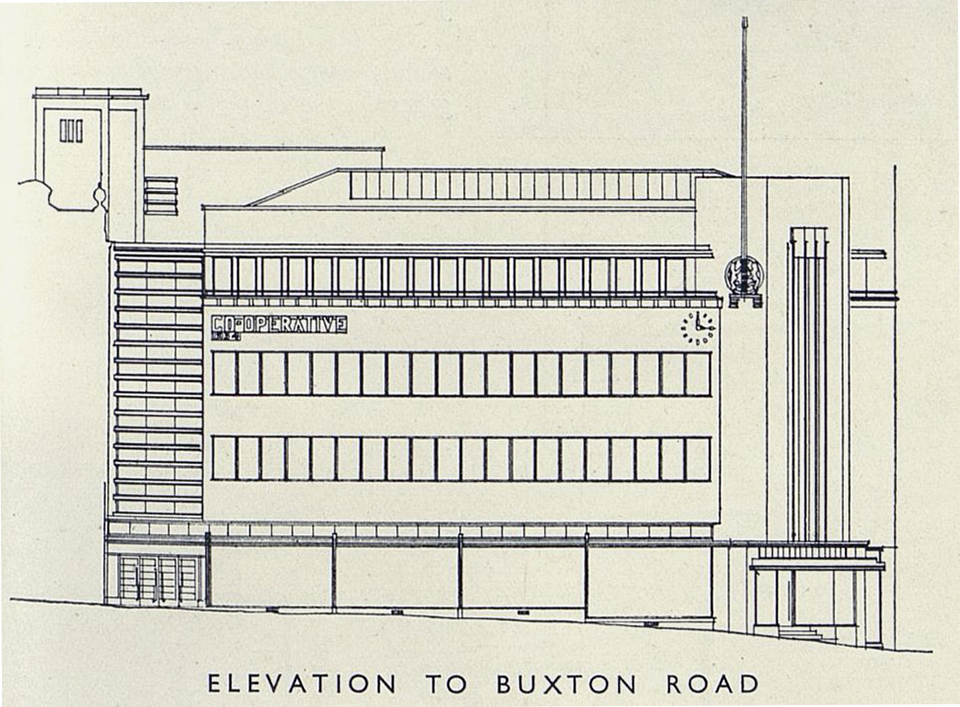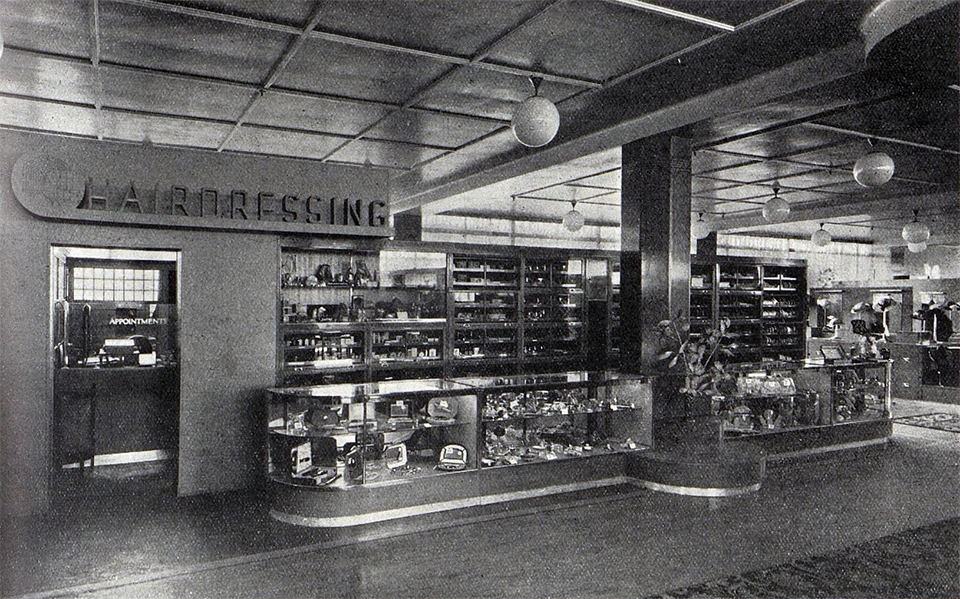Co-operative Drapery Store
1936
William Albert Johnson was a son of Levenshulme, Manchester and the son of a Co-op grocery store manager. Whilst studying at the Manchester Schools of Technology and Arts, he was articled to Chief Architect of the Cooperative Wholesale Society (CWS) Francis E. L. Harris. [1] In 1924 at the age of 39 he succeeded Harris and stayed in post until his retirement in 1950. Johnson travelled extensively in Germany and Holland and was heavily influenced by Erich Mendelsohn. Mendelsohn's Sckoken store in Stuttgart (1928) was said to be influential for the Bradford Co-op and Johnson’s Dantzic and Redfern Buildings in the Manchester Co-op estate were certainly after Dudok. In an interview for the CWS magazine The Producer in August 1930, he declared ‘Modern architects must use modern materials in a modern way. Architecture must adapt itself to its environment, or die’ [2]. This extension to the drapery department of the Huddersfield Industrial Society was as resolutely modern as Johnson’s declaration. Its steel framed construction and reinforced concrete floors allowed the architect to create ribbon windows to the upper floors set in ashlar sandstone faced walls atop a shopfront of bronze framed full height glazing. Slender mullions to the stairwell facing East Parade (now Queensgate) fixed an entire glazed screen in place, its verticality contrasting against the horizontal emphasis of the rest of the façade. The splayed corner was in response to local planning regulations. Neatly abutting its Victorian neighbour, meeting its roofline and picking up its rhythm in the transoms of a second stairwell, tucked back to articulate the junction, the extension calmly assimilated itself with the existing streetscape. The setback upper level with oversailing flat roof riffed on the adjoining cornice with pared back confidence. Co-operative buildings designed from the Manchester Architect’s Department were consistently modern, first of all in their factories and warehouses (few of which survive), and then in these provincial properties that are remarkably undervalued. So much so, that this building has had a crude three storey extension stuck onto its roof.
[1] https://manchestervictorianarchitects.org.uk/architects/william-albert-johnson
[2] The Producer, August 1930, p.222
